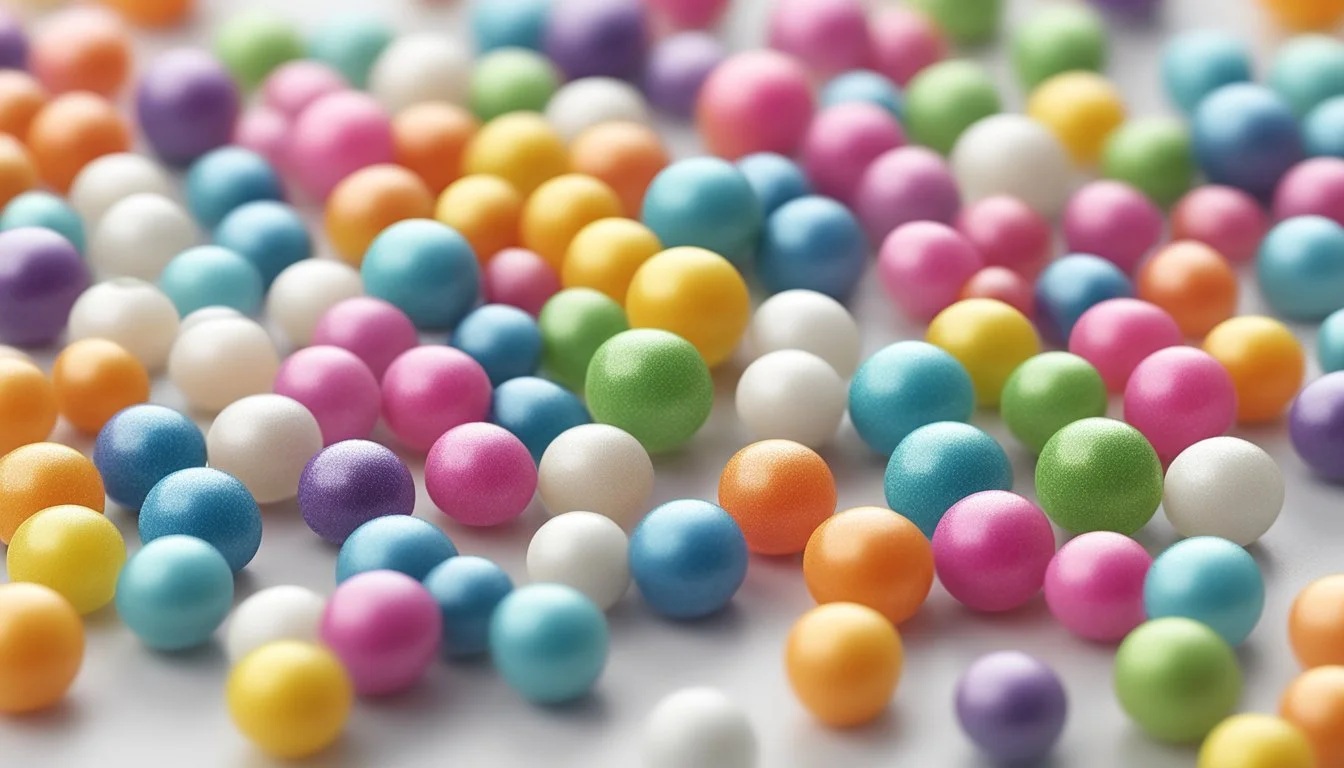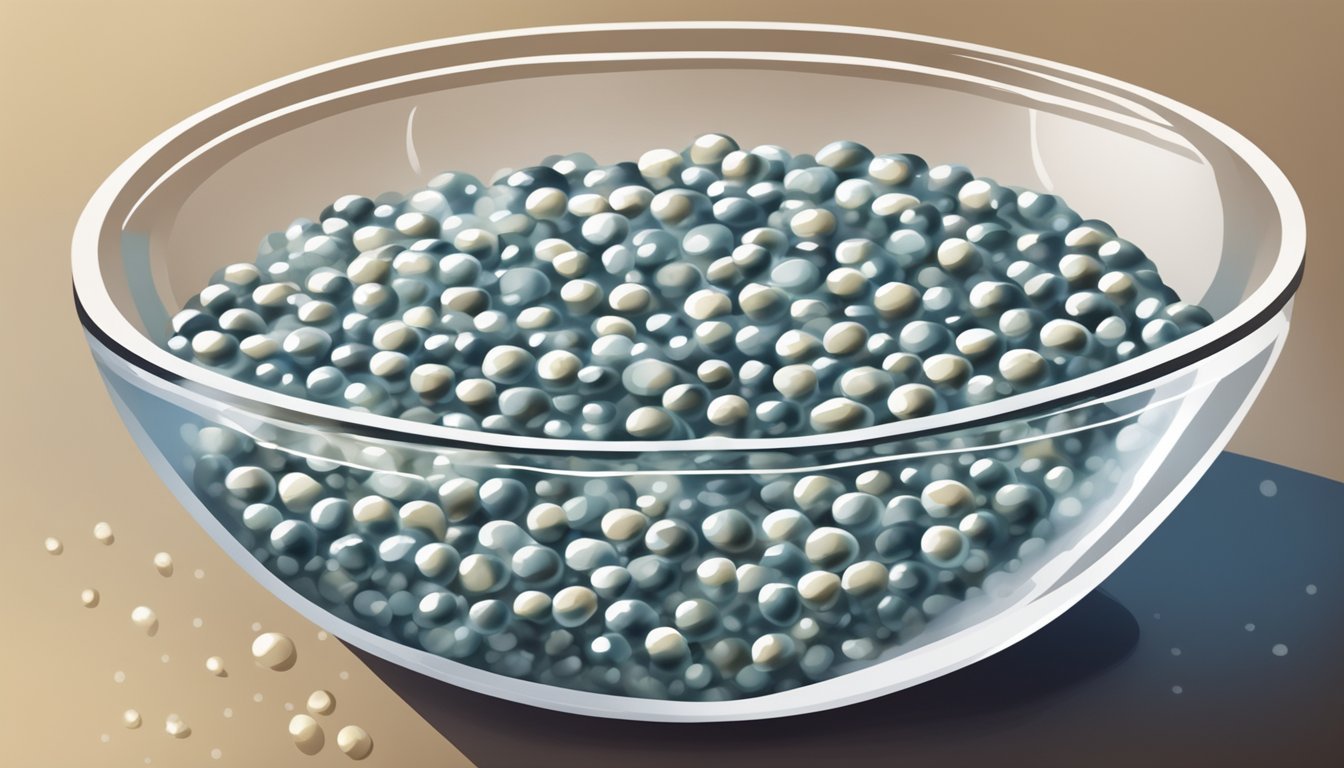Tapioca Pearls Substitutes
Best Alternatives for Your Favorite Drinks and Desserts
For those who enjoy the chewy texture of tapioca pearls in their boba tea or desserts but need a substitute, there are several reliable options available. Arrowroot powder stands out as one of the best alternatives, offering a similar texture and being flavorless, making it perfect for boba pearls. This gluten-free option can be used in equal ratios to tapioca starch, ensuring an easy swap without compromising on quality.
Another common replacement is instant tapioca pearls or boba, which can directly substitute tapioca starch in a 1-to-1 ratio. This can be especially handy for those who want to maintain the traditional consistency in dishes like pie fillings and cobblers. Cornstarch is another viable option, particularly as a thickening agent, though only half the amount is needed compared to tapioca flour, due to its stronger thickening properties.
For those seeking a completely tapioca-free method, combining flour and water can also create a satisfactory boba alternative. This mixture, when cooked over medium heat, forms a smooth, thick paste that can mimic the desired texture. With these substitutes, anyone can enjoy their favorite recipes without concern for missing tapioca pearls.
Understanding Tapioca Pearls
Tapioca pearls, primarily made from the starch of the cassava root, are a common ingredient in various culinary applications due to their unique properties and versatile nature. They provide a chewy texture and glossy finish, making them a favorite in bubble tea and many other dishes.
Origins and Properties
Tapioca pearls originate from the cassava plant, which is native to South America. The cassava root is processed to extract starch, which is then formed into small, round pearls. These pearls are typically white, though they can be colored to add visual appeal to dishes.
The primary component of tapioca pearls is tapioca starch, a gluten-free ingredient known for its thickening abilities. Tapioca pearls are composed mostly of carbohydrates, specifically in the form of starch. This makes them an excellent staple ingredient for those following a gluten-free diet.
Role in Foods and Beverages
Tapioca pearls are best known for their role in bubble tea, a popular beverage where they provide a satisfying chewy texture. They are also used in various desserts, like tapioca pudding, and in savory dishes such as soups and stir-fries. The pearls can be added to sauces and gravies to enhance the texture and consistency.
In baking, tapioca pearls and tapioca flour can serve as a thickener for pie fillings, providing a glossy finish that enhances the visual and textural appeal of baked goods. When cooked properly, tapioca pearls become translucent and retain their chewy texture, which is essential for the experience they provide in bubble tea and similar recipes.
Reasons for Substituting Tapioca Pearls
There are several reasons why someone might need or want to find a substitute for traditional tapioca pearls. These reasons range from dietary restrictions and allergies to textural preferences and availability issues.
Dietary Restrictions and Allergies
For individuals with Celiac Disease or those following a gluten-free diet, avoiding gluten is essential. While traditional tapioca pearls are inherently gluten-free, cross-contamination during processing can be a concern.
Allergies to certain ingredients used in the making of tapioca pearls may also necessitate substitution. Opting for products like arrowroot flour or rice flour ensures a safe and enjoyable experience for those with specific dietary restrictions.
Textural Preferences
Some people may not enjoy the chewy texture and glossy finish of traditional tapioca pearls. Different substitutes offer varied textural experiences that can appeal to those seeking alternatives.
For example, using cornstarch or potato starch can provide a smoother consistency, enhancing the culinary enjoyment for those who prefer a less chewy texture.
Availability Issues
Availability can be a major factor when traditional tapioca pearls are not easily accessible. Substitutes like all-purpose flour or instant tapioca pearls offer practical solutions when sourcing authentic tapioca pearls is challenging.
These alternative ingredients can act as staple substitutes, ensuring recipes can still be made even when tapioca pearls are not on hand. This makes it easier to continue enjoying favorite dishes regardless of ingredient shortages.
Common Tapioca Pearl Substitutes
Several alternatives can replace tapioca pearls, catering to both culinary needs and dietary requirements. These substitutes include starch-based options, different flours, gelatinous agents, and homemade solutions.
Starch-Based Substitutes
Arrowroot Powder: Frequently lauded as an excellent substitute for tapioca starch, arrowroot powder is flavorless, gluten-free, and easy to digest. It matches tapioca starch on a 1-to-1 ratio, making it simple to measure and swap in recipes.
Cornstarch: Commonly found in many kitchens, cornstarch effectively thickens soups, stews, and sauces. It provides a similar consistency to tapioca pearls when used for thickening and can also be substituted at a 1-to-1 ratio.
Potato Starch: Potato starch offers another gluten-free alternative similar in texture and usage to tapioca starch. It's particularly beneficial in gluten-free baking and thickening applications.
Flour Substitutes
Cassava Flour: Made from the same root as tapioca, cassava flour has a high fiber content and works seamlessly as a substitute in many gluten-free recipes.
Rice Flour: Also gluten-free, rice flour provides a slightly different texture but can be used effectively in combination with other substitutes for thickening or baking purposes.
All-Purpose Flour: In recipes where gluten doesn't pose a dietary concern, all-purpose flour can replace tapioca pearls. It is versatile and widely available but may alter the final texture slightly.
Almond Flour: When a nutty flavor is acceptable, almond flour can offer a low-carb, gluten-free alternative, mainly in baking. It's not a direct textural match but brings unique benefits to recipes.
Gelatinous Substitutes
Agar Agar: Derived from seaweed, agar agar is a vegan substitute for gelatin and can create a gelatinous texture similar to tapioca pearls. It's used in desserts and drinks to replace the chewy texture.
Gelatin: A non-vegan option for replicating the consistency of tapioca pearls, gelatin can thicken and solidify liquids. It's useful in both savory dishes and desserts.
Xanthan Gum: Often used in gluten-free baking, xanthan gum acts as a thickening and stabilizing agent. It can mimic the texture provided by tapioca pearls in various recipes.
Making Substitutes at Home
Homemade Boba: For those who enjoy a hands-on approach, making boba (bubble tea pearls) at home from scratch is possible using ingredients like tapioca starch or substitutes like arrowroot powder and potato starch. Recipes typically involve combining the starch with water and sugar, forming pearls, and boiling them to achieve the desired texture.
Instant Tapioca Pearls: Pre-packaged instant tapioca pearls or boba can be a convenient substitute in recipes requiring tapioca pearls. They provide a quick and easy solution, often needing only brief cooking before use.
Pectin: Used in jam-making, pectin can offer an alternative for achieving a gel-like consistency. It can be particularly useful in desserts and preserves.
Substitution Techniques and Ratios
When substituting tapioca pearls in cooking and baking, it's essential to choose the right alternative and apply the correct ratio to maintain the desired texture and consistency. This is particularly important whether you are thickening sauces or creating delightful desserts.
For Thickening Sauces and Gravies
For thickening sauces and gravies, cornstarch is an excellent alternative. Its strength as a thickening agent means you need only half the amount compared to tapioca flour. For example, if a recipe requires 1 tablespoon of tapioca flour, substitute it with 1/2 tablespoon of cornstarch.
Arrowroot powder is another viable option, offering a similar neutral flavor and texture. Use it in a 1:1 ratio substituting for tapioca flour. If the recipe calls for 1 tablespoon of tapioca flour, use 1 tablespoon of arrowroot powder. Arrowroot is also gluten-free, making it suitable for those with dietary restrictions.
Both cornstarch and arrowroot powder should be mixed with a small amount of cold liquid before adding to hot mixtures to avoid clumping.
For Baking and Desserts
In baking and dessert recipes, preserving the consistency and texture is crucial. Tapioca starch alternatives include a variety of gluten-free flours and mixes. Cornstarch can replace tapioca flour effectively. If a recipe calls for 1 tablespoon of tapioca flour, use 1/2 tablespoon of cornstarch due to its stronger thickening abilities.
Instant tapioca pearls (Boba) can be used in a similar manner. Substitute 1 tablespoon of instant tapioca pearls for every 1 1/2 tablespoons of tapioca flour required. This is particularly useful in recipes like pies and cobblers.
Gluten-free flour mixes that contain a blend of rice flour, potato starch, and sorghum flour can also work. These mixes typically replace tapioca flour in a 1:1 ratio, ensuring the texture in brownies and other baked goods remains consistent. When using these mixes, it's important to follow product-specific recommendations to achieve the best results.
Considerations When Choosing Substitutes
When selecting substitutes for tapioca pearls, one should pay particular attention to the potential impacts on both flavor and nutritional content. These factors can vary significantly depending on the chosen alternative.
Impact on Flavor and Consistency
Different substitutes bring unique flavors and textures. For instance, arrowroot powder is flavorless and provides a smooth consistency, similar to tapioca. Potato starch also offers a neutral flavor and a slightly different but acceptable texture in most recipes.
For recipes where a chewy texture is desired, cornstarch can serve well, though it may result in a slightly more gelatinous texture. Instant tapioca pearls or boba may offer a more authentic texture, often used in place of tapioca starch.
Cassava flour, while derived from the same plant as tapioca, has a slightly nuttier flavor and maintains a consistency close to tapioca pearls. The choice of substitute should consider these differences to achieve the desired flavor and consistency in the final dish.
Nutritional and Fiber Content
Evaluating the nutritional benefits and dietary restrictions is crucial. Arrowroot powder and cassava flour are both gluten-free, catering to those with gluten intolerance or celiac disease. These options are also easier to digest.
Potato starch and cornstarch are lower in dietary fiber compared to their whole-food counterparts like cassava flour. This could impact those looking to increase their fiber intake.
Cassava flour offers a higher fiber content and some protein, making it slightly more nutritious.
When considering substitutes, it's essential to choose based on specific dietary needs, whether it be gluten-free requirements, higher fiber content, or general nutritional benefits, ensuring the chosen substitute aligns with the intended health goals.
Health Aspects and Dietary Considerations
Tapioca pearls are enjoyed by many, but it's important to be aware of their health impacts and how substitutes can address dietary needs, especially for those with specific health conditions or restrictions.
Gluten-Free and Allergy-Friendly Options
For people with celiac disease or gluten sensitivities, gluten-free alternatives to tapioca pearls are crucial. Most substitutes, such as sago, arrowroot, or pearl barley, are naturally gluten-free and can be safe additions for those avoiding gluten.
Table comparing gluten-free substitutes:
Substitute Gluten-Free Common Allergens Sago Yes None Arrowroot Yes None Rice Flour Yes None
These substitutes can also be beneficial for those with allergies to other common ingredients. Checking the packaging for allergen information is always a good practice.
Incorporating Substitutes in a Balanced Diet
Substitutes like arrowroot and sago can offer more fiber and protein, contributing to a balanced diet. For instance, sago is a source of carbohydrates and some minerals but lacks significant protein and fiber, emphasizing the need to pair it with vegetables and lean proteins for a well-rounded meal.
List of balanced meal suggestions:
Sago porridge with mixed berries and nuts
Arrowroot pudding with fresh fruit
Rice flour pancakes with a side of vegetables and eggs
Such combinations integrate substitutes seamlessly into diets while enhancing nutritional intake.




